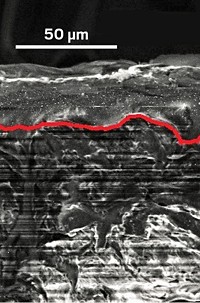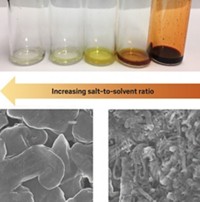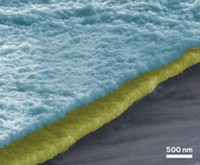Advertisement
Grab your lab coat. Let's get started
Welcome!
Welcome!
Create an account below to get 6 C&EN articles per month, receive newsletters and more - all free.
It seems this is your first time logging in online. Please enter the following information to continue.
As an ACS member you automatically get access to this site. All we need is few more details to create your reading experience.
Not you? Sign in with a different account.
Not you? Sign in with a different account.
ERROR 1
ERROR 1
ERROR 2
ERROR 2
ERROR 2
ERROR 2
ERROR 2
Password and Confirm password must match.
If you have an ACS member number, please enter it here so we can link this account to your membership. (optional)
ERROR 2
ACS values your privacy. By submitting your information, you are gaining access to C&EN and subscribing to our weekly newsletter. We use the information you provide to make your reading experience better, and we will never sell your data to third party members.
Energy
Aluminum-Ion Battery Keeps On Going
Electrochemistry: Flexible power pack charges rapidly and retains charge capacity after thousands of cycles
by Mitch Jacoby
April 13, 2015
| A version of this story appeared in
Volume 93, Issue 15
Researchers in the U.S. and Taiwan have developed an aluminum-ion battery that charges quickly and performs well even after thousands of charging cycles (Nature 2015, DOI: 10.1038/nature14340). The advance may lead to improved battery safety, given that the new battery does not use a flammable electrolyte solution as lithium-ion batteries do. And because its electrodes are made from aluminum and graphite, the battery has the potential to be inexpensive. Scientists have tried for years to capitalize on the potential benefits of aluminum-ion batteries. Success has remained elusive because of problems including cathodes that decompose upon repeated charging, quickly falling charge capacities, and short lifetimes. The team, led by Stanford University’s Hongjie Dai, has made headway in overcoming those issues. The group coupled a graphite foam cathode they made via vapor deposition with an aluminum metal anode and an AlCl3-ionic liquid electrolyte, forming a flexible battery. They found that similar test cells made with other types of graphite began failing quickly when charged too fast. In contrast, the graphite foam cell retained full charge capacity for more than 7,500 cycles, even when charged in less than a minute, or some 75 times as fast.





Join the conversation
Contact the reporter
Submit a Letter to the Editor for publication
Engage with us on Twitter